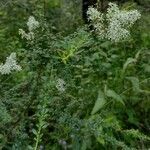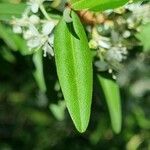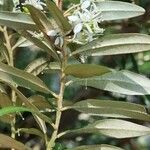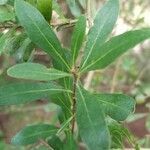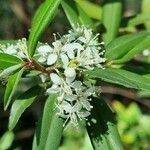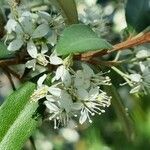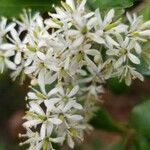An erect shrub or small tree. It grows up to 3.5-10 m tall. There are many branches in the upper part. The small branches and shoots end in spines. The leaves occur in clusters. The leaves are oval or sword shaped and rather thin. They are 1-5 cm long. The flowers occur in branched flower clusters which form a cone shape. These are at the tips of branches. The flowers have 5 narrow oblong petals. They are white and star like. The fruit is a heart-shaped brittle capsule. These dry capsules tend to hang on the plant after the seed have fallen. There are both large leafed and small leafed kinds.
